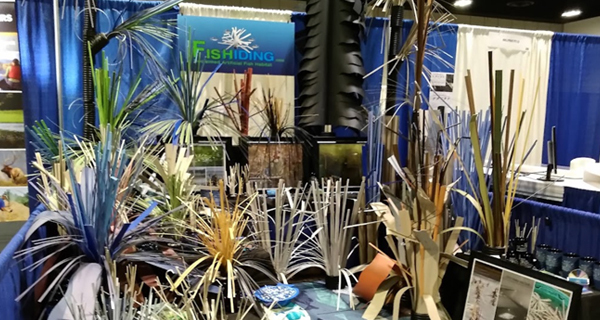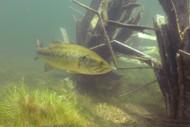The Science Behind Fishiding Artificial Fish Habitat-Underwater Video (Part 4 of 10)
Posted by Ewald/Engbretson on 27th Nov 2018
Part Four: Evaluating Performance-
When we’re testing a new model of Fishiding Artificial habitat in a lake setting, we always let the fish make the basic decisions. No matter how much we may like a structure we design, if the fish don’t respond to it, it’s shelved. We’re not interested in deploying constructions that masquerade as habitat but do nothing in the lakes. If fish reject them, so do we. There’s no guessing involved. All our habitat is literally fish tested and approved.
It can be difficult to determine if fish really like a certain piece of habitat or not. When evaluating the effectiveness of artificial fish habitat, one important metric we use is something we call the allegiance score. In marketing, it’s similar to what advertising people refer to as brand loyalty. Simply put, this means the degree to which adult fish linger in, or hold onto, any particular piece of cover, and how reluctant they are to leave it. This observed behavior is graded subjectively on a scale of zero to five. For example, in the spring, many Centrachids will absolutely refuse to vacate their nesting sites, even when molested. We can say that the allegiance score for the nesting site is 5. Nesting crappies aren’t nearly as immovable in the same situation, so their allegiance score in their own nesting site would be a 3. Catfishes in this same scenario typically score a 4. If we place a piece of habitat in the water and fish swim by it as if it’s invisible, it gets an allegiance score of zero. Basically, we reason that if fish ignore our structures or won’t stage on them, something has failed. We feel that scores of 5 can’t realistically be expected for any fish that’s not protecting fry or eggs. So we’re looking for allegiance scores of 3 or 4.
Today’s video gives you a visual idea of the process described. The video shows a single large bass staging on a group of our bunker complexes. Almost immediately, the fish becomes aware of our cameraman approaching in SCUBA diving gear. The bass has every opportunity at this point to flee but remains with the habitat. The bass is approached more closely to determine her allegiance to the structure. By this point, there is some measure of danger to her, and her body language signals some alarm. As we circle her and explicitly invade her comfort zone she turns and has yet another opportunity and a clear path to flee. However, she retains position close to the habitat even in the face of undetermined threat. It’s almost as if she’s tethered to it. We interpret this behavior as a genuine reluctance to abandon this fish habitat structure. We would therefore assign an allegiance score of 4. This tells us that this model is accepted by the fish and is performing as intended.
The allegiance score is one of the tools we regularly use to determine if our artificial habitat passes the fish test. In case you think that fish will stage on basically any structure, we can assure you this is not the case. We’ve discovered that fish are much more discriminating than we would have ever imagined. In fact, we’ve tested many artificial habitat models that scored a zero on this test and failed miserably in other evaluations we use to determine performance. These duds (if they were made by Fishiding) were all scrapped. While we don’t do the stringent testing the FDA does on pharmaceuticals, we do like to know if our habitats actually work as advertised. We certainly wouldn’t be using any that didn’t perform exceptionally.
Designing and building effective fish habitat is a genuine science. It’s still in its infancy, but we’re learning a great deal every day about the nuances of design and deployment. With today’s deep interest in artificial fish habitat, we’re eager to share our findings with fisheries professionals who want to learn more. We’ve come a long way since the days of throwing discarded Christmas trees into our lakes and calling it a day. Stay tuned. In this continuing series, we’ll show you underwater video of how fish utilize artificial habitat and why so many popular designs are completely ineffective.
If you’ve missed any part of this series you can catch up at https://www.youtube.com/watch?v=6Krzy... For more information contact David Ewald at https://www.fishiding.com Phone: (815) 693-0894 Email: sales@fishiding.com



